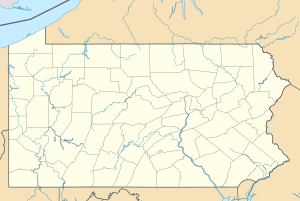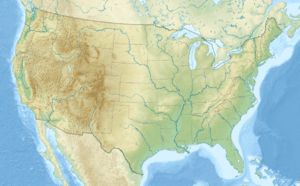Browneller Run facts for kids
Quick facts for kids Browneller Run |
|
|---|---|
|
Location of Browneller Run mouth
|
|
| Other name(s) | Tributary to Youghiogheny River |
| Country | United States |
| State | Pennsylvania |
| County | Westmoreland Fayette |
| Physical characteristics | |
| Main source | Lutz Creek divide about 3 miles northeast of Arnold City, Pennsylvania 1,098 ft (335 m) 40°07′46″N 079°47′09″W / 40.12944°N 79.78583°W |
| River mouth | Youghiogheny River across the Youighiogheny River from Banning, Pennsylvania 771 ft (235 m) 40°13′40″N 079°47′19″W / 40.22778°N 79.78861°W |
| Length | 1.96 mi (3.15 km) |
| Basin features | |
| Progression | generally southeast |
| River system | Monongahela River |
| Basin size | 1.94 square miles (5.0 km2) |
| Tributaries |
|
| Bridges | Harmony Church Road, PA 51, Wick Haven Road, Wickhaven Hollow Road (x2) |
Browneller Run is a small stream, about 1.96 miles (3.15 km) long. It flows into the Youghiogheny River in Fayette County, Pennsylvania. It's interesting to know that this is the only stream in the entire United States with the name Browneller Run!
Where Browneller Run Flows
Browneller Run starts about 3 miles northeast of a town called Arnold City, Pennsylvania. This is in Westmoreland County. From there, it flows southeast. It then enters Fayette County. Finally, it joins the Youghiogheny River across from a place called Banning.
What is a Watershed?
A watershed is an area of land where all the water drains into a single stream, river, or lake. Browneller Run's watershed covers about 1.94 square miles (5.02 square kilometers). This area gets about 40.6 inches (103 cm) of rain each year. About 39% of the land in this watershed is covered by forests.
Nature Around Browneller Run
Browneller Run is home to a special natural area called the Browneller Run Confluence BDA. This area has two types of important forests:
- An upland forest that is very old and well-developed.
- A riverine forest which grows along the river.
This area is also important because it is home to a very rare plant species. Protecting these areas helps keep our natural world healthy!



